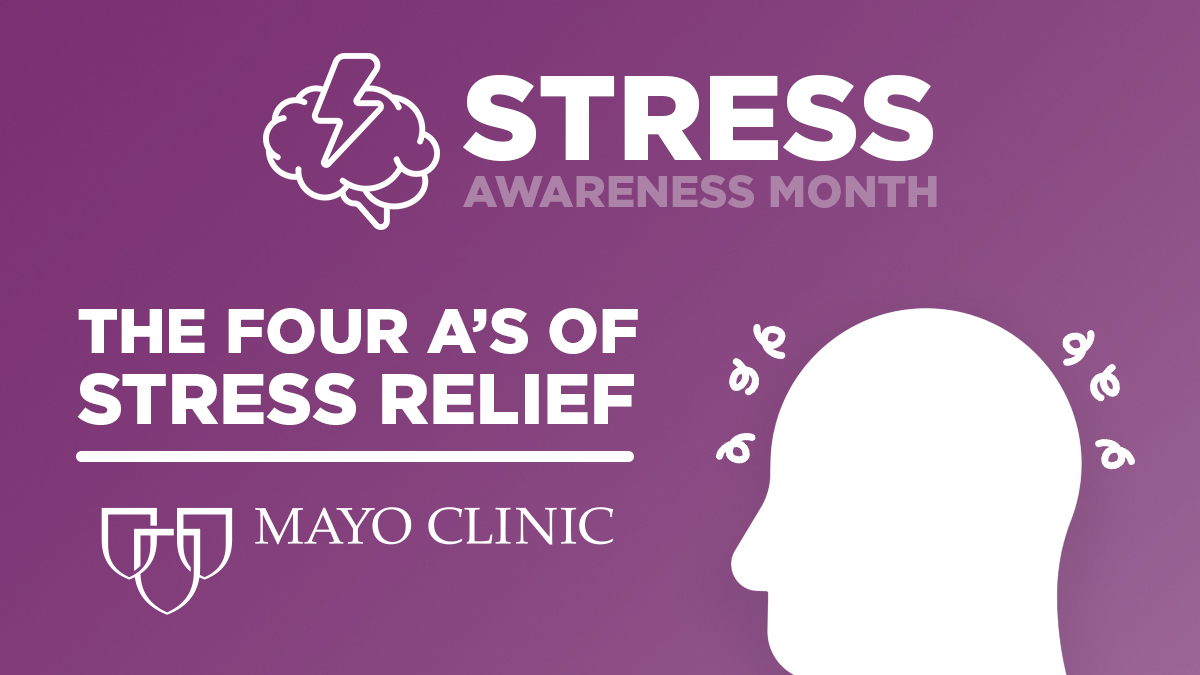
April is National Stress Awareness Month and provides us with a chance to recognize the causes of stress in our lives, the negative impacts, but more importantly, an opportunity to better manage our health. A poll from the American Psychological Association in March 2022 showed that 87% of participants described the last couple of years as “a constant stream of crisis”. With long-term, chronic stress being at an all-time high, it’s important to consider the risks of continuing to maintain such high stress levels and dedicate time to learning and implementing stress-management strategies.
Short-term stress can provide a wealth of short-term benefits including increased immune response, improved memory, feeling more alert and more. However, the longer this stress continues, the higher the risk for serious health consequences. Chronic stress creates inflammation, which puts nearly every body system and function at risk. To name a few, chronic stress can cause increased risk for allergies, digestive problems, high blood pressure, cardiovascular disease, insomnia, weight gain, autoimmune disorders, and more.
In order to reduce serious health consequences, The Mayo Clinic recommends a technique known as The Four A’s and should be considered in sequential order: Avoid, Alter, Accept and Adapt. This process recognizes that while some sources of stress are inevitable, we may be able to completely avoid or reduce some sources of stress.
The first of The Four A’s – Avoid – involves assessing your regular sources of stress and considering which, if any, can be avoided. This often means setting firm boundaries and learning to be comfortable with the word “no”. While it can feel uncomfortable without some practice, turning down extra responsibilities in order to preserve your health is an important skill to learn. This step may also include planning ahead or changing your routine to avoid stressors. For example, if it is stressful trying to make dinner each night, the solution may include making a menu for the week and grocery shopping on a day that is more convenient or even making and freezing meals for the week.
Once these initial stressors have been eliminated, it’s time to take a look at what we can Alter to reduce stress further. By altering our stress, we aren’t necessarily avoiding it, but setting reasonable boundaries on time, energy or emotional constraints. Imagine a time where someone stopped by unexpectedly and, while you may have enjoyed the visit, it later left you scrambling to get necessary tasks done. This is a great opportunity to set a time boundary such as “I am so glad that you stopped by. I am only available for an hour before I need to get back to work.” By setting boundaries in this way, the goal is to reclaim the time or energy you need to reduce stress and set yourself up for success.
Despite our best efforts to reduce stress, there is some amount of stress that is inevitable. For these situations, there is value in the next step – Accept – which may include leaning on someone we trust to share our concerns and practicing a positive mindset. A risk of chronic stress is spiraling into a pattern of thoughts that continuously lead to another negative thought, potentially causing feelings of anxiety and/or depression. Imaging the worst-case-scenario prevents the chance to also imagine best-case-scenario. By gaining control of these thoughts early and often, this spiral thought pattern loses traction and allows us to take a more objective approach.
The final step of The Four A’s is Adapt, which includes adapting expectations, mindset, and perspective. A valuable activity to start this process includes listing the things that bring you joy and assessing how many of the things that are causing stress align with this list. For example, if you find joy while spending time with family, but find activities such as grocery shopping stressful because they are interfering with family time, it might be worth assessing whether it’s realistic to make this more of a family activity or consider rearranging the weekly routine so that grocery shopping does not cut into time spent with family. Another technique that may be especially helpful during this step of managing stress is asking “what will this mean 1 year from now?”. While the dirty dishes may feel particularly stressful in the moment, their impact in the big picture is relatively small.
By taking the time to put The Four A’s into practice now, the goal is to reduce potential health risks and extend quality of life well into the future.
